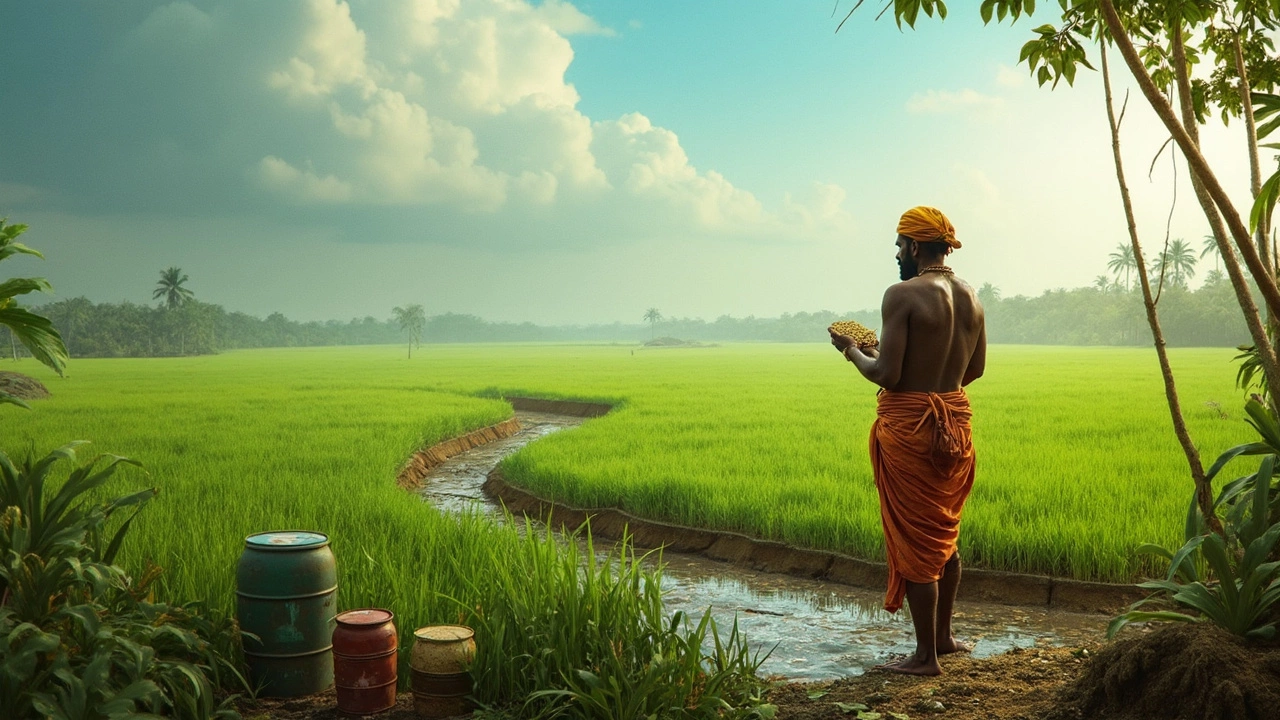Rice is a staple food for billions, but it comes with some hidden problems. From environmental impacts to health concerns, growing and eating rice isn't always as simple as it seems. This article breaks down the main drawbacks of rice and gives you tips to deal with them. You'll learn about water usage, chemical exposure, nutritional gaps, and more. If you grow rice or eat it often, you’ll want to know what’s going on behind the scenes.
Rice Health: How to Keep Your Rice Plants Strong and Productive
When we talk about rice health, the condition of rice plants as they grow from seed to harvest, influenced by soil, water, pests, and climate. Also known as paddy health, it’s not just about how tall the plants grow—it’s about whether they survive monsoons, resist bugs, and fill with full grains. In India, where rice feeds over half the population, poor rice health can mean lost income, food shortages, and wasted effort. A single field of unhealthy rice can lose 30% or more of its yield to diseases like blast or pests like stem borers—problems that show up fast if you’re not watching.
Good rice health starts with the basics: clean water, balanced soil, and the right timing. Rice needs more than just rain—it needs steady, shallow flooding during its early growth, then drier conditions as it matures. If the soil is too compact or lacks organic matter, roots can’t breathe, and plants turn yellow. Adding compost or green manure before planting helps, but it’s not enough on its own. You also need to watch for nutrient gaps. Rice that’s pale green or stunted often lacks nitrogen, while purple leaves signal phosphorus deficiency. And don’t ignore weeds—they steal water and nutrients faster than you think.
Then there are the hidden threats. rice pests, insects and animals that damage rice crops, including stem borers, leafhoppers, and rodents can wipe out entire fields overnight. Stem borers tunnel inside the stalks, making plants fall over without warning. Leafhoppers spread viruses that turn leaves brown and stunt growth. And rodents? They don’t care about your schedule—they eat at night, right before harvest. The same goes for rice diseases, fungal, bacterial, or viral infections that spread quickly in humid conditions, like rice blast and bacterial leaf blight. Blast looks like small, diamond-shaped spots on leaves and spreads fast in wet weather. Once it hits, you need to act—no chemicals, no fungicides, no magic spray. Just remove infected plants, improve airflow, and avoid overwatering.
Healthy rice doesn’t happen by accident. It’s the result of daily observation. Walk your field every few days. Check the underside of leaves. Look for tiny insects, discoloration, or wilting. Keep a notebook—even simple notes like "June 12: 5 plants with yellow tips, no rain since 3 days"—help you spot patterns. Talk to other farmers in your area. What worked for them? What didn’t? Many of the best tips aren’t in books—they’re passed down from neighbor to neighbor.
And while you’re at it, don’t forget the bigger picture. Healthy rice fields support bees, frogs, and birds. They hold water better during droughts. They don’t need as much fertilizer because the soil stays alive with microbes. That’s why organic methods, crop rotation, and avoiding chemical overload aren’t just "eco-friendly"—they’re smart economics. You’re not just growing rice. You’re building a system that lasts.
Below, you’ll find real guides from farmers and gardeners who’ve dealt with these problems firsthand. From fixing waterlogged soil to stopping pests without chemicals, these posts give you the no-fluff, tested advice you can use right away—no degree required.
